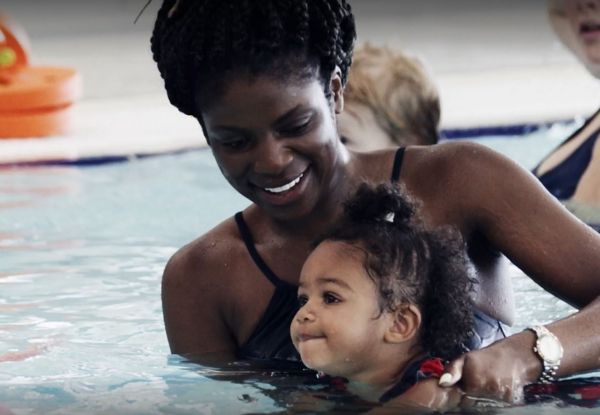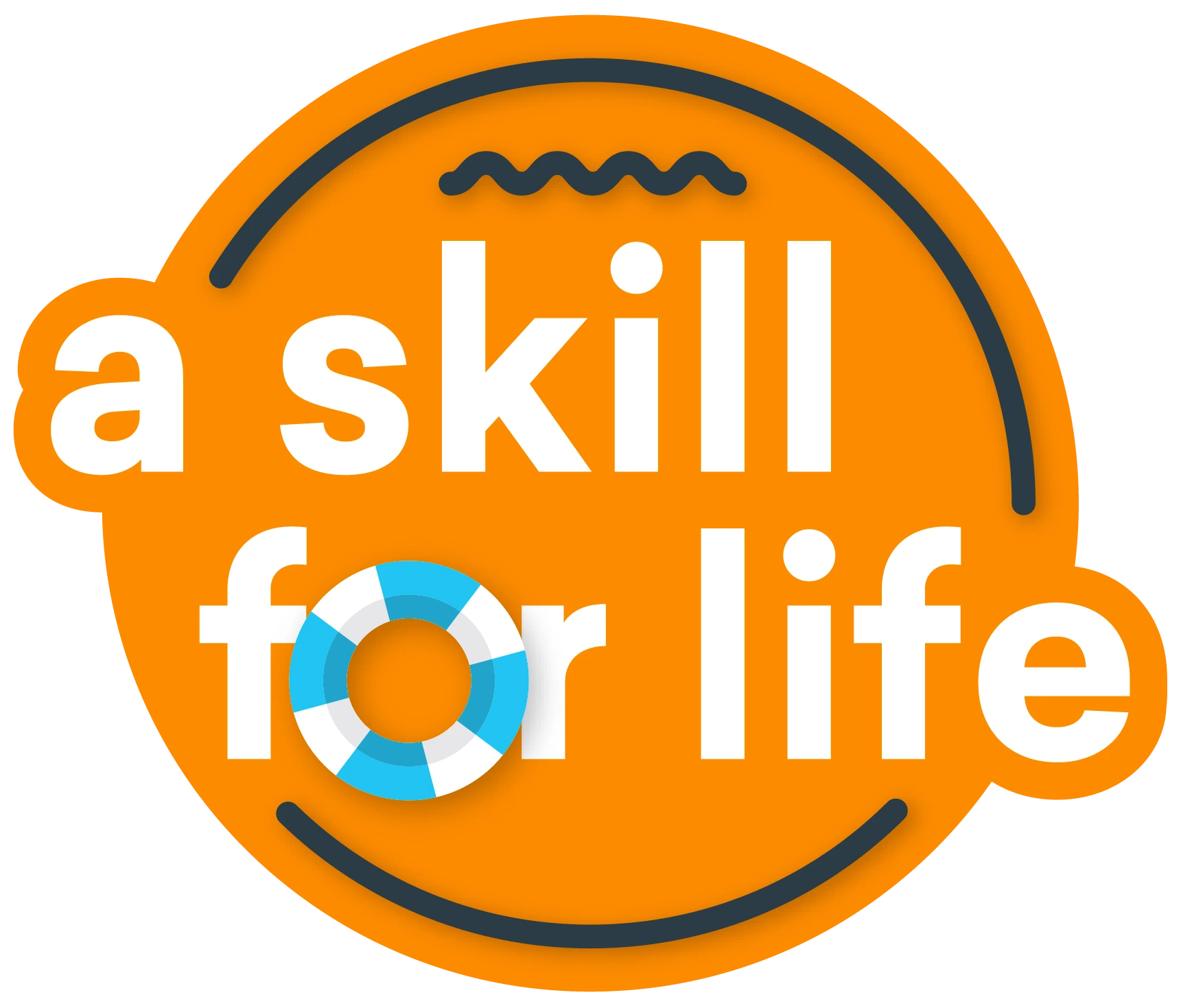Getting started with children’s swimming lessons
How do swim lessons work and why are they essential?
As a parent, there are so many lessons we pass on to our children, but when the time comes to get started with swimming lessons, it can often feel a little scary, which is why it’s so important to introduce them in the safest way possible - through swimming lessons with accredited and fully trained teachers.
Swimming lessons offer peace of mind for parents, but also ensure your child receives expert guidance in how to stay safe in the water, mastering the fundamentals of swimming, but also nurturing their confidence and love of water.
In this blog, we explore the ideal age for children to start swimming, the benefits swimming brings, essential water safety practices, and the various lesson options tailored for different age groups.
Jump to:
- What age can a child learn to swim?
- Why should your child learn to swim?
- Teaching children water safety
- How many swimming lessons does a child need?
- Swimming lessons for babies
- Swimming lessons for toddlers
- Swimming lessons for 4+ year olds
- What age can a child go swimming on their own?
- Children’s swimming lessons near me
- A skill for life
- FAQs
What age can a child learn to swim?
It may surprise you, but children aged as early as 3 months old can begin learning how to swim.
Babies have a natural affinity to the water, stemming from being in the womb. Their reflexes, like their dive reflex (which automatically closes their airway when submerged), are still strong - helping them adapt to the water much quicker. Early exposure to swimming helps babies develop essential motor skills and coordination.
By gently introducing them to swimming from an early age, they will become more confident in the water and also learn the essential skills required to keep them safe.

Why should your child learn to swim?
Swimming is an essential life skill that every child should learn from an early age and one that they will be able to carry with them for the rest of their lives.
There are so many benefits that come with teaching your child how to swim, including:
- Keeping their heart and lungs healthy
- Increasing strength, flexibility and stamina
- Improving balance and posture
- Building confidence in the water
- Teaching them water safety
Teaching children water safety
When you're starting your child's swimming journey, prioritising water safety is absolutely essential.
By teaching water safety, you give them the tools to tackle any future challenges they may face while swimming.
Water safety tips
There are five water safety tips that all parents need to be aware of when their children are learning to swim. These are survival skills that will help them become more confident and stay safe in the water:
- Learning to get back to the side
- Floating on their back
- Keeping their head above water
- Treading water
- Turning in the water
All of these are taught in our swimming lessons, but it’s also important for parents to be aware of them so they continue to be practised outside of swimming lessons too.
That’s why we offer free swimming for all children who do swimming lessons with us*
How many swimming lessons does a child need?
This can vary depending on a few factors, including their age, comfort level in the water, previous experience, and individual learning pace. We usually recommend children to have consistent and ongoing lessons to build and maintain their swimming skills.
At Places Leisure, we offer baby and toddler swimming lessons and then from age 4+ the structure of our swimming lessons is based on the Swim England guidelines, which consist of 7 stages. By Stage 7, your child will have developed all the essential skills to be safe and confident in the water.

Swimming lessons for babies
It’s possible to introduce your baby to the water from as early as three months old, since this will help their physical development and confidence in the water.
We offer Adult and Baby swimming lessons for infants aged 3-18 months. They’re a wonderful opportunity for parents to join their babies in building water confidence. These lessons aren’t just about teaching your baby to swim but they also help you share an amazing bonding experience with your baby, which is why so many parents love attending these classes weekly with their little one.
Swimming lessons for toddlers
Once your baby reaches 18 months, they can move into our Adult and Child swimming lessons tailored for ages 18 months to 3 years.
In these infant swim classes, you'll still be with your littles ones to help them take part in fun games that are aimed to improve their fundamental swimming abilities.
These lessons lay a solid foundation and prepare them for independent swimming lessons once they reach the age of 4.

Swimming lessons for 4+ year olds
From age 4, your child will be able to take their first steps into Pre-school ducklings, which is aimed for children who can follow instructions and feel more comfortable being able to move independently. During these classes they will learn how to:
- float
- roll over
- blow bubbles
- swim, enter and exit the pool safely
Once your little one begins primary school, they will move into independent children’s swimming lessons.
This is where the Swim England structure will come more into play and your child will be taught all of the key steps they need to know to become a competent and confident swimmer.
What age can a child go swimming on their own?
Children under the age of eight should always have adult supervision while swimming, regardless of how confident they might be in the water.
Even if your child is over eight but they lack confidence in swimming - they could be a risk to not just themselves but to others. So it’s essential that they’re either accompanied or closely supervised by an adult.
All of our swimming pools are staffed with lifeguards but, as parents/guardians, you are still responsible for your child's safety in the water.
Children’s swimming lessons near me
Our leisure facilities span over 60 locations in the UK and we offer swimming lessons for all ages at all of these locations. Simply enter your postcode to find your nearest centre.
By booking swimming lessons through Places Leisure, you’ll easily be able to track your child’s progress through our Course Hub which allows you to view how your child is getting on in their lessons and when they are ready to move to the next stage.
As the lessons go on, the swimming teacher will keep an eye on how your child is progressing with the goals for each stage. When they begin meeting all of their goals regularly, they get a badge and certificate and can move up to a new class!
Take a look at the range of children’s swimming lessons available with us at your local leisure centre.

A skill for life
Swimming lessons for children open up a world of fun and enjoyment, with the chance to develop confidence in water from an early age. But more importantly, as your child learns to swim they are gaining a skill for life that will enable them to stay healthy and active – and safe – wherever they are.

*The inclusion of free swimming with children’s swimming lessons excludes Inflatable Sessions at all centres, and Fun Sessions at Pavilions In The Park, Romsey Rapids Sports Complex, and The Triangle, and Fun for All sessions at Prudhoe Waterworld, Concordia Leisure Centre & Blyth Sports Centre.
Frequently Asked Questions
When can a child stop swimming lessons?
Swim England advise parents to keep their child in swimming lessons until they have completed Learn to Swim Stages 1 to 7. That’s because by completing all seven stages, a child will develop the main water competency skills needed for self-rescue and survival in real-life scenarios.
That doesn’t mean that your child needs to stop lessons after completing Stage 7. If they’re enjoying their lessons and you’re happy for them to continue then you can let them carry on.
We offer a range of follow-on aquatic activities at our pools to help children stay active and develop their swimming skills. Discover what’s available at your nearest centre.
Are school swimming lessons enough?
While school swimming lessons can help children to develop water safety, they often cannot be relied upon alone to ensure your child becomes a competent swimmer. Many schools only offer swimming lessons a few weeks a year, which for most children isn’t enough time to gain the skills and confidence they need to become proficient. It’s a good idea to supplement school swimming lessons with additional classes that cater for your child’s individual needs.
Is it easier to learn to swim as a child?
Like many skills, swimming is generally considered easier to learn the younger you are. One of the reasons for this is that children tend to be more adaptable to – and less fearful of – new experiences. In addition, their bodies are more flexible, and they grasp new information and instructions more quickly, making it easier for them to develop ability and technique.
Learning to swim as a child also means you have a lifetime ahead of you to enjoy the many benefits of swimming while, importantly, staying safe in and around water.
What should my child bring to their first lesson?
First swim lesson essentials for your child include a swimming costume or trunks, a towel – and for babies or toddlers – a swim diaper/nappy. You might also want to bring a swim cap, goggles and a bag to pop your child’s wet costume in, along with some snacks and a drink.